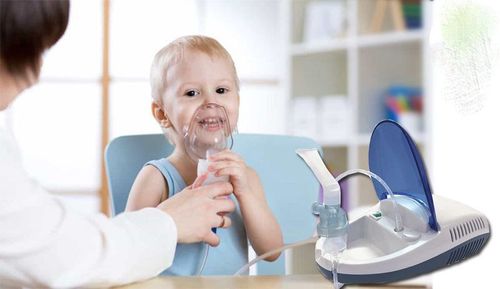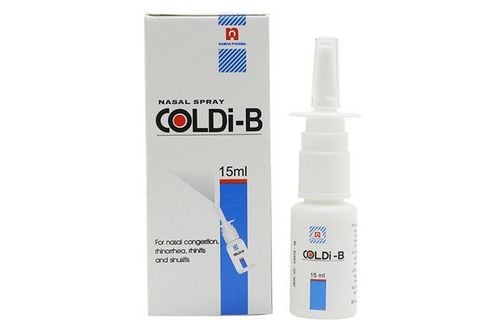This is an automatically translated article.
The article is professionally consulted by Master, Doctor Nguyen Huy Nhat - Department of Medical Examination & Internal Medicine - Vinmec Danang International General Hospital.
Aerosol is a local treatment method for respiratory diseases including nasopharyngitis, sinusitis, laryngitis, bronchopneumonia, bronchial asthma,... However, the abuse of aerosol method can cause many negative health effects.
1. What is aerosol?
Aerosol is a method of using a drug diffuser in the form of a mist, affecting the mucosal system of the upper or lower respiratory tract. This is a topical treatment for diseases of the respiratory tract mucosa such as laryngitis, nasopharyngitis, tracheobronchitis, rhinosinusitis, etc. When steaming, the medicine is in the form of mist caused by the machine. generated will be pushed to adhere to the layer of hair on the respiratory mucosa. As a result, the drug will act directly on the infected sites.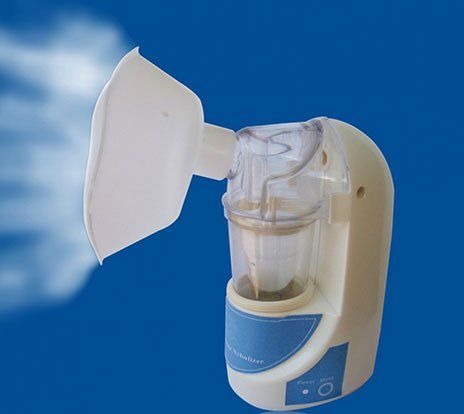
Otolaryngology nebulizer: large aerosol particles that can be deposited in the upper respiratory tract mucosa; Nebulizers for the lower respiratory system: can emit drug particles in a smaller form so that they fall into the lower respiratory tract. The ability to absorb aerosol drugs into the machine is about 2%. The duration of action of aerosol drugs is quite short, about 3-4 hours. Therefore, depending on the severity of the disease, the doctor may prescribe the use of aerosols 2-4 times a day. Depending on the disease of the upper or lower respiratory tract, depending on the specific disease, the doctor will prescribe the use of mixed drugs to perform the appropriate aerosol method.
Respiratory nebulizers are quite commonly used. Indications for use of the device include: acute asthma attack, respiratory failure, laryngeal stridor, need to dilute sputum before performing treatment, inability to use metered-dose inhaler, drugs to be used. If a metered-dose inhaler is not available, high-dose inhaled antibiotics are needed to control or treat persistent infections.
2. Medicines used in aerosols
For each type of disease and severity - mild, the doctor will prescribe different aerosols for the patient. Specifically:Patients with allergic rhinitis - sinus - throat with symptoms of sneezing, nasal congestion, runny nose, ... are often used corticosteroids, anti-edema, congestion. If the patient has an infection, a superinfection may have to use a combination of antibiotics; Cases of spasm of the trachea and bronchi due to asthma, acute bronchitis, chronic obstructive pulmonary disease, ... need to use aerosol method with suitable drugs to dilate the bronchi and help the disease. easy to breathe; Aerosols and suitable drugs are used to thin sputum for people with lung disease; Nebulization with saline for children with bronchiolitis due to obstruction of viscous sputum to dilute sputum, making it easier for children to cough and expel viscous sputum; Use essential oils from eucalyptus leaves, mint, lemongrass, lemongrass leaves, perilla leaves, ... with a nebulizer to disinfect, clear the nose - throat, reduce flu symptoms, make the patient more comfortable.
3. Why should aerosols not be abused?
Some patients think that the more nebulizers are used, the faster the recovery will be. However, this can lead to excessive nebulization and drug dependence, with long-term damage to the lungs (since most aerosols are corticosteroids, overdose can cause extremely dangerous side effects). .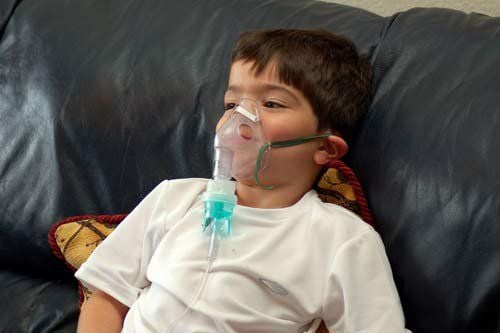
Besides, even with asthma, many experts do not recommend aerosols at home. The reason is because when aerosols are much, the patient's relatives will not know the signs of the disease getting worse, when detected, it is already critical. In addition, a complication of nasopharyngeal inhalation is the immediate reflex bronchospasm. In particular, this procedure has strict regulations on anti-infection: Each time aerosol has to change the set of wires. However, many families only use a set of wires through many uses and sometimes harm the patient's health.
4. Standard Aerosol Procedure
How to use a standard nebulizer is as follows:Using a dropper or clean syringe, take a quantity of 0.9% distilled water or physiological saline (according to the dose prescribed by the doctor) into the medicine cup. If using pre-mixed drugs, there is no need to add more; Using a clean syringe or dropper, take an amount of medicine (as prescribed by your doctor) into the medicine cup with saline or distilled water. If there is a ready-made medicine, use a syringe to take the amount of medicine prescribed by the doctor; Connect the mask or breathing tube to the medicine cup; Place the mask on your face, adjust the straps for a snug fit, or bring up the breathing tube; Breathe slowly and deeply through your mouth (inhale deeply, pause for 1-2 seconds, then exhale) until the medicine is empty in the cup (average takes about 10-20 minutes). During this time, the patient needs to focus on taking deep breaths to get the medicine into the lungs.
5. Note when aerosolizing children
Always read the name of the drug carefully, only use the drug in the correct dose and perform nebulization exactly as prescribed by the doctor. For example, arbitrarily using the bronchodilator salbutamol can cause some side effects such as nervousness, tremors, anxiety, chest pain, increased blood pressure, bronchospasm... Each nebulizer has its own set of features. mask or mouthpiece included. Using a mouthpiece will deliver more medicine to the lungs than using a mask. However, the use of mouthpiece requires good cooperation from the patient, so it should not be used for children under 5 years old. When using the mask, it should be close to the face to avoid the medicine remaining on the face or escaping;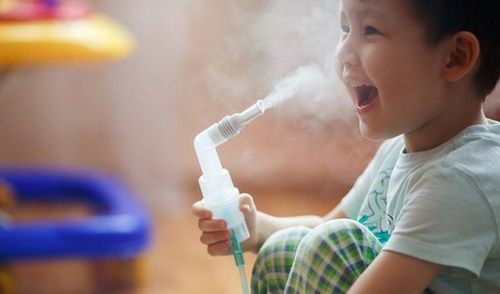
6. How to keep the nebulizer clean and maintain
Proper maintenance of the nebulizer helps to avoid the risk of damage to the machine, limiting the problem of bacterial infection into the lungs. Some notes users need to remember when cleaning and maintaining the nebulizer are:After use: Remove the mask (or mouthpiece) and medicine cup from the plastic tube. Rinse the mask (or mouthpiece), medication cup, syringe (or dropper) under running water and place on a clean towel to dry. Finally, put the parts back in the duct, run the machine for about 10-20 seconds to dry the inside; Do not put the machine in water; Do not wash plastic pipes; Every week, wash the mask (or mouthpiece), medicine cup, dropper (or syringe) with warm soapy water, then rinse with clean water. After that, the user dries the outside and inside as above, occasionally wiping the outside of the device with a damp cloth. Aerosol is a very good method of treating many respiratory diseases. However, aerosols should not be abused. In particular, before using aerosols, it is advisable to consult a specialist doctor carefully.
Respiratory diseases are examined and treated by a team of highly qualified and experienced doctors at Vinmec hospital. Including Master, Doctor Nguyen Huy Nhat with many years of experience in the field of respiratory disease treatment at Hue Central Hospital, Hoan My General Hospital, .. before being a doctor of General Internal Medicine Department. Vinmec Da Nang International General Hospital.
Please dial HOTLINE for more information or register for an appointment HERE. Download MyVinmec app to make appointments faster and to manage your bookings easily.





